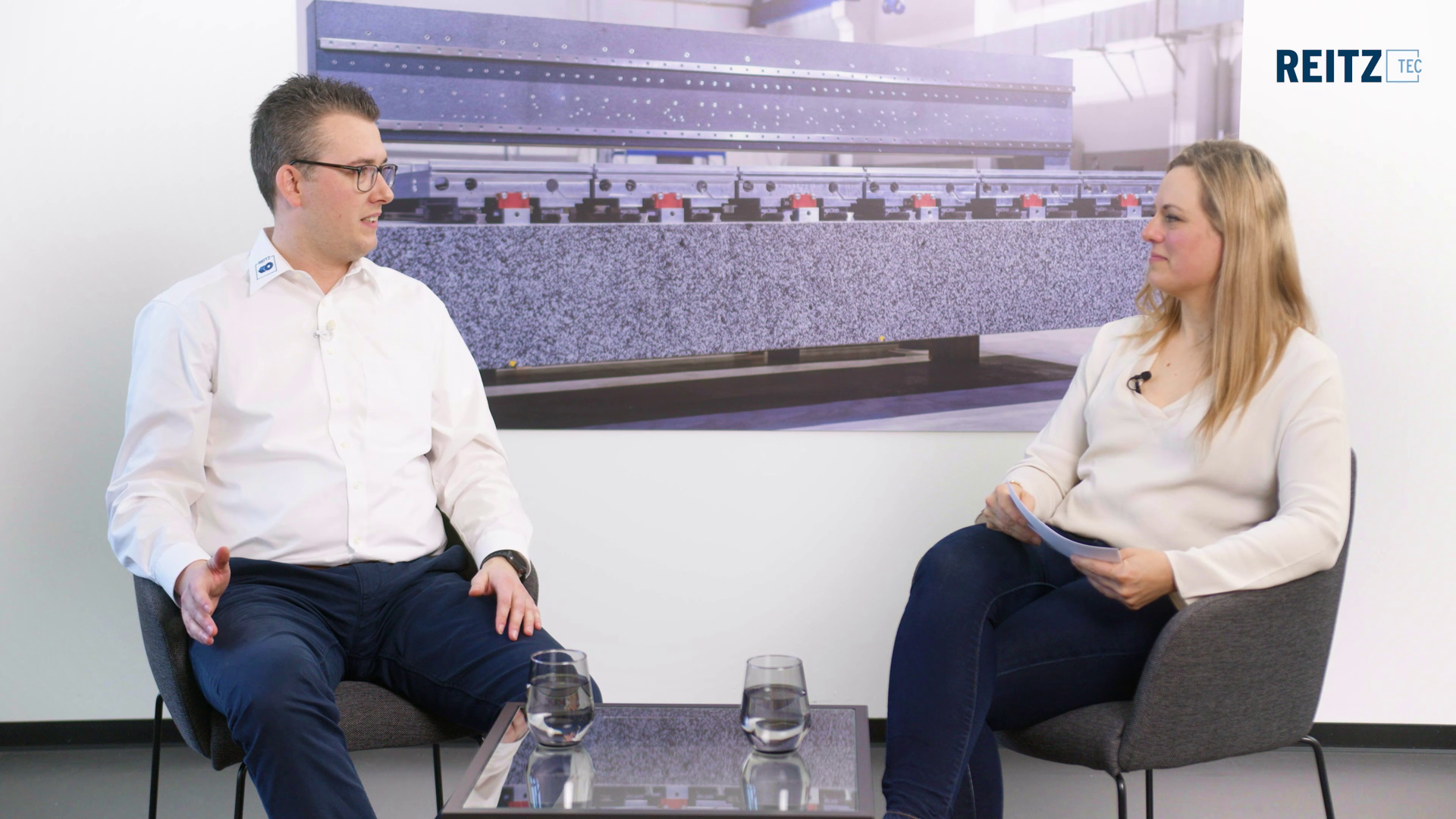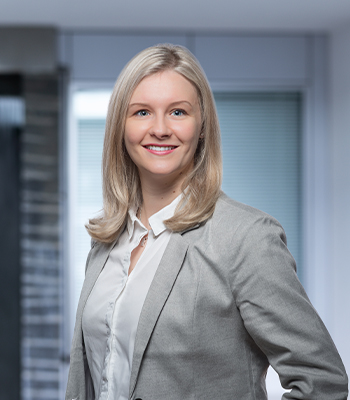Procuring the granite: the material's route to REITZ Natursteintechnik
REITZ Natursteintechnik loves and lives granite. In this interview, Christopher Reitz explains where the granite comes from and how it is processed. How does REITZ Natursteintechnik organise the granite procurement? What are the stages in the granite's route on its journey to REITZ Natursteintechnik?
"We need reliable partners, because of course we are also committed to reliability towards our customers – that's the only way we can work in partnership throughout the entire supply chain and be successful together." (Christopher Reitz)
Christina: Hello, Christopher! It's great to have you back for the REITZ blog again – the blog that's all about granite and natural stone technology. Today we're going to be talking about procuring the granite. Where does it come from? How is it mined? Let's get started. So where does your granite come from, the granite you use?
Christopher Reitz: The granite we use comes from Europe, South Africa and India. In Europe, we're talking about large forest areas with granite deposits. The first layer, so about the first two to three metres, needs to be removed. Then the material becomes denser and no longer has trees or bushes and so on growing over it. It's drilled vertically first, then horizontally. The resulting block is "caught" with a rope, and then cut into slices with a rope saw. It's rather like cutting individual slices of bread from a loaf. We then turn the whole layer over with a wheel loader or excavator. This process is repeated again and again: drill the holes; set up the rope; cut the slices. Then the individual slices are loaded.
Christina: And what's it like in South Africa and India?
Christopher Reitz: There we have "boulders". As you would imagine from the name, they're really lovely spheres. There is no vegetation on the material. The slicing technique is also used here: holes are drilled as well, the ropes inserted and slices of the granite cut. Large blocks are cut open and the smaller blocks then loaded.
Christina: Doesn't mining use a tremendous amount of energy? How does it affect your carbon footprint?
Christopher Reitz: As you know, our carbon footprint is extremely important to us, and we do use a lot of electricity in the quarries where we mine. Not so much diesel any more, which greatly reduces the carbon emission. It's not possible to work with a clear conscience today without taking these considerations into account.
Christina: Do you always get the granite from the same quarries or do you use different ones, checking to see where what is available or where it might be a particularly good price at the moment?
Christopher Reitz: No, it's entirely a matter of trust for us. We work with partners of many years’ standing in Europe, South Africa and India. Of course, this also gives us better availability. We don't keep chopping and changing, but focus on building up long-term partnerships. We are reliable, and we look for reliable partners. As with our customers; we are also committed to reliability towards them – that's the only way we can work in partnership throughout the entire supply chain and be successful together.

Christina: How heavy is one of these blocks when you have mined it?
Christopher Reitz: Ideally, they will weigh between 24 and 26 tons. Then they can easily be handled with a normal truck, the kind you see on motorways. We can move up to 65 tons in Asslar. When a customer sends us an order, we have a lead time of about four to six months for the material, depending on whether we're importing it from Europe, South Africa or India. And if the customer gets us on board early enough, we look at the required material sizes together, and especially at the weight. We also have to check that we're actually allowed to transport it on the motorways. That's a very important consideration.
Christina: Are there any differences in the quality of the granite from the various sources?
Christopher Reitz: We choose the material together with the customer to suit the particular application. European material is very light, which you'll often see in processing machines. The materials from South Africa and Indian tend to be darker. This is known colloquially as "Impala". You'll see it, for instance, as kitchen worktops, where Impala is also used. The main difference is that the dark material is denser. Denser material is often used in the field of air-bearing technology, so in measuring technology. We analyse the customer's use and aims in the process, and then make a recommendation.
Christina: How does the granite get to your works?
Christopher Reitz: The material from South Africa is transported from the quarry to the harbour by road, then taken by ship to Antwerp. Then it's taken by road again from Antwerp to us in Asslar or to our extended workbenches, that is, our partners who we've been working with for many years. European granite is also brought to us in Asslar by road. In recent years we've made far more use of rail transport, which of course has improved our carbon footprint. We're currently in the process of planning our own siding. This would be a tremendous help, as the granite would then be brought straight to our works in Asslar. We could unload the trains directly at the works – which would save us a tremendous amount of time!
Christina: How much granite do you process in a year?
Christopher Reitz: Last year we processed in the region of 20,000 tons of granite. To put it in perspective: picture a bag of cement weighing 25 kilos. Now picture 800,000 of these bags! That would be 20,000 tons.
Christina: That's a lot! And what happens to the leftover material? After all, you don't use every bit of the granite. What do you do with the waste?
Christopher Reitz: We process 99% of the European material. The tiny amount that is left is used to make gravel, kerbs or paving stones. When we have finished cutting the blocks from South Africa and India, we collect all the leftover material and then, after two to three years, turn it into gravel. We then use this, for instance, to build new halls, for building extensions or to reinforce our storage area. And of course, construction companies also collect the gravel to use it in typical road construction.
Christina: Did you use the gravel to build your new halls as well?
Christopher Reitz: Yes, we did. We used around 4,000 tons of leftover material for Halls 8 and 9, almost entirely for the ballast bed.
Christina: And that's how the granite gets from the quarry to REITZ Natursteintechnik in Asslar. Many thanks to Christopher Reitz for the exciting information.

